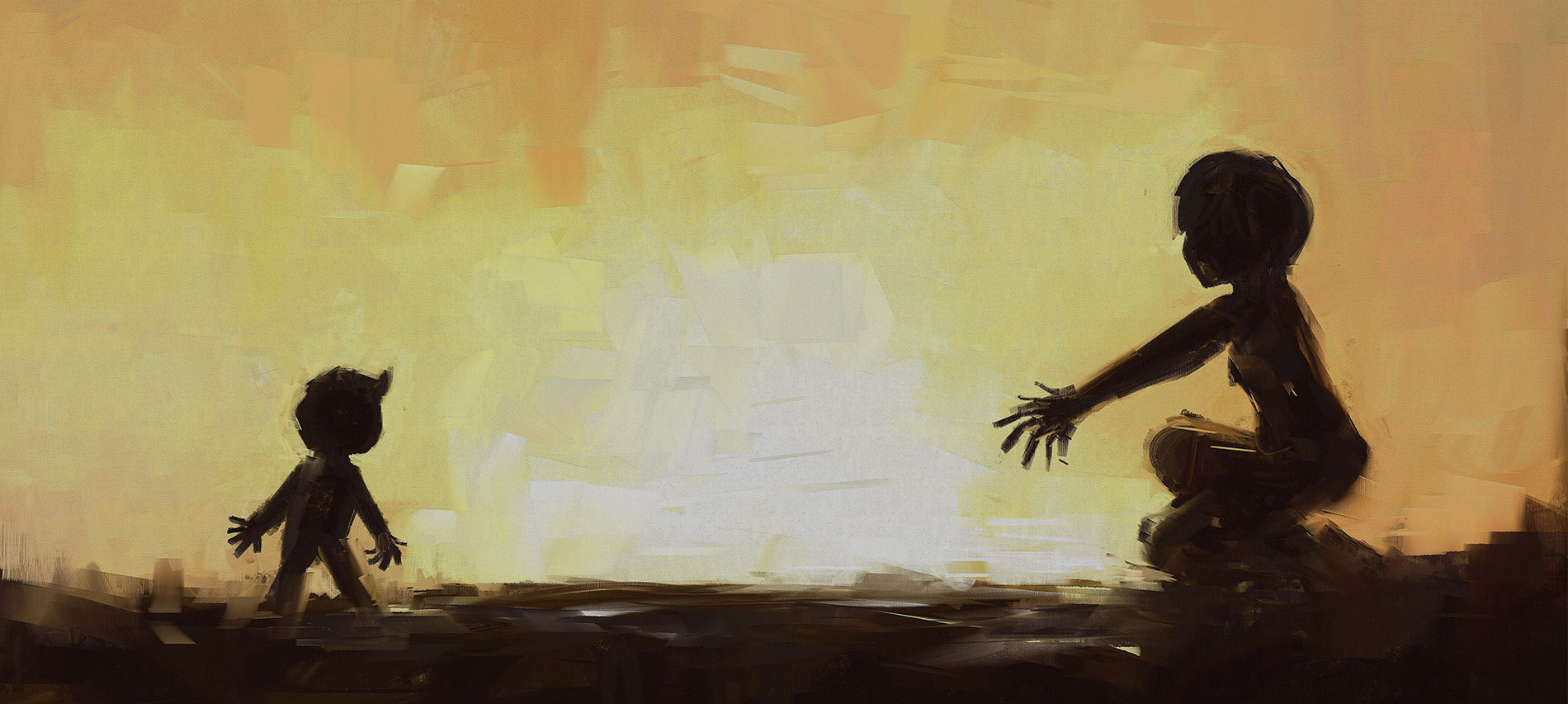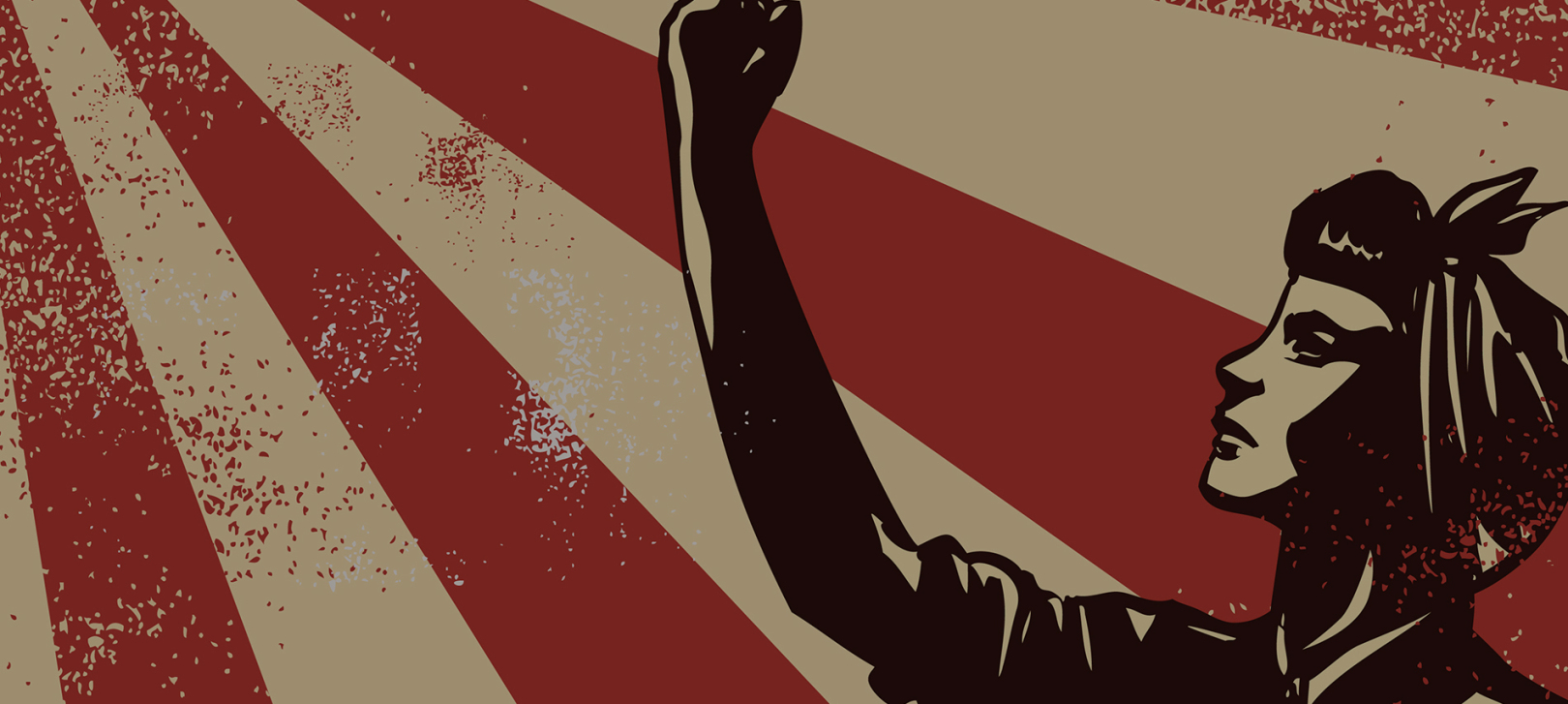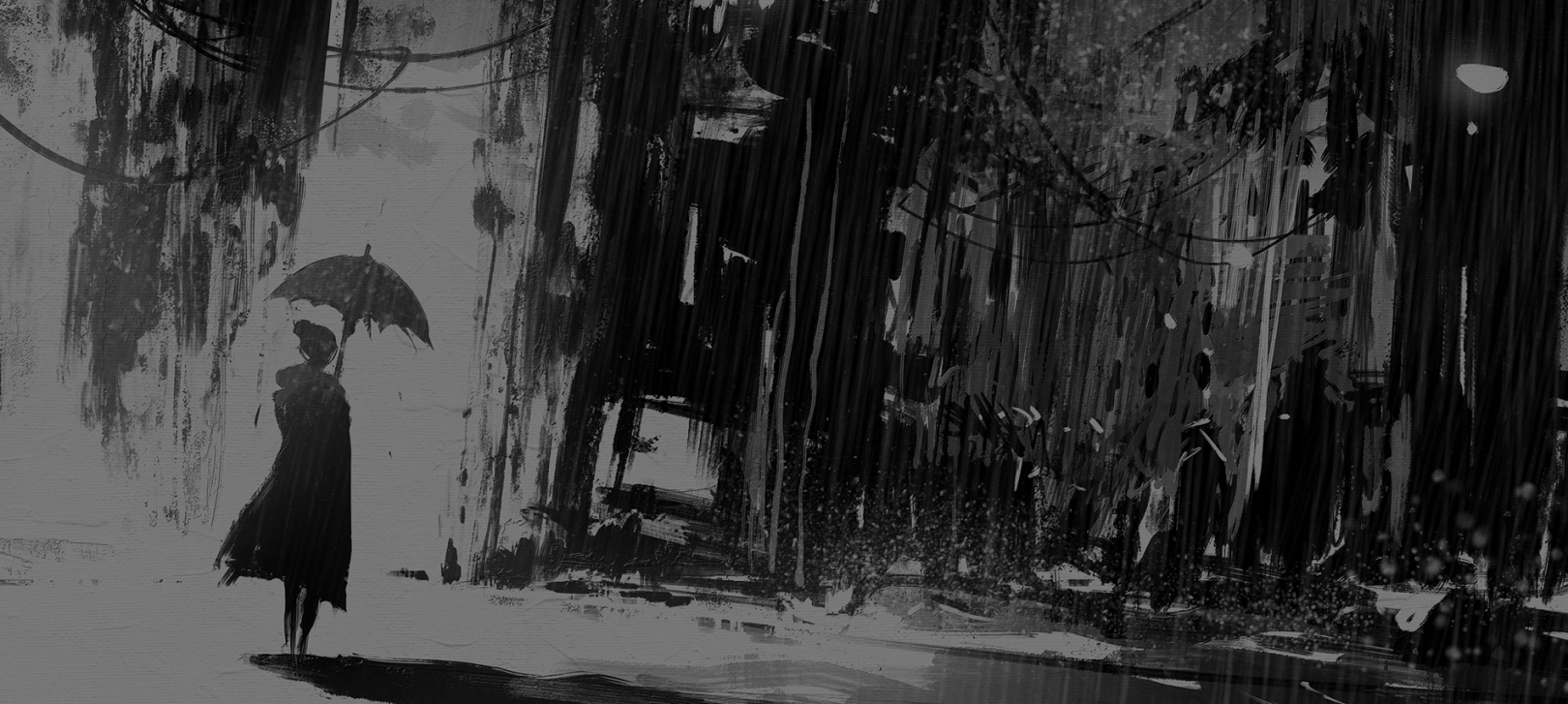Mothers have been an important mainstay in epics, folk tales and mythologies for generations. Today, as we celebrate Mother’s Day, here is an exclusive excerpt on mothers from Devdutt’s Devlok 2.
A mother gives birth to a child. But did god give birth to the mother or did a mother give birth to god?
As interesting as the question is, the answer too is not simple. In a temple, the space where a god’s image is kept is known as garbha griha; that is, god is residing inside the garbha. Garbha means womb. Whose womb is this? A temple itself has been seen as a woman, a mother. Spiritually, Prakriti is everyone’s mother. Prakriti has given birth to sanskriti (culture). God’s mother is also Prakriti.
The Rigveda has this interesting sentence that Daksha gave birth to Aditi and Aditi gave birth to Daksha; that is, the father created the mother and the mother created the father. When you go way back in the past, the division between father and mother collapses. With god, this concept does not hold because god is swayambhu—he has given birth to himself; he is his own mother. Two words are used often in the Puranas – Yonija (born of the womb) and Swayambhu (who gives birth to self). God is always swayambhu, but his avatars are yonija; they experience birth and death. For instance, Ram is an avatar, so he is born and dies. He has a mother, Kaushalya. Krishna, likewise, has a mother, Devaki. Shiva is swayambhu.
In Tantra parampara, where goddesses are given a lot of importance, the stories and folk tales speak of how in the beginning of the world there was only a devi/Prakriti called Adi Maya Shakti. She gave birth to three eggs from which were born Brahma, Vishnu and Shiva. She is therefore called Triamba (one who gave birth to three children). This does not happen in puranic stories. In Shakt parampara, god does have a mother. In Vaishnav parampara, god gives birth to himself; and he creates the world and its creatures from himself. In Shaiva parampara, Shiva gives birth to himself; he is swayambhu, doesn’t have a mother, but gives birth to all mothers.
Devi is sometimes called a kumari (virgin) and sometimes mata (mother). How is that?
Christianity has a concept of the virgin mother who is Jesus’s mother. The word kumari, in India and in the world, does no necessarily mean virgin. It means a woman who is independent, who has no husband, and no man has a right over her. She has no ties and is completely liberated. So she is both mata and kumari, that is, an independent mother. Her hair is always depicted untied, to symbolize her freedom. No one can have dominance over Prakriti.
In Vaishnodevi or Kal Bhairav temples, the story is that of Bhairav wanting to have a relationship with the goddess; the goddess refused and cut off his head. ‘You cannot control me.’ Kal Bhairav then becomes her guard. In another story, when Brahma’s fifth head wanted a right over her, Bhairav cut off his head. Such are the violent stories associated with kumari.
The symbolic meaning could be that man’s ego prevents a devi from becoming a kumari, which is why he gets cursed or gets his head cut off. These are spiritual, metaphysical topics.
Shiva was swayambhu, but who was his son Karitkeya’s mother—Parvati or Ganga?
In Shiv Puran, the story is that after their marriage, Shiva says he has no need for a child. He says, ‘I am swayambhu, anadi, anant, without beginning or end; I will never die. So why do I need children?’ Devi says, ‘But I want children; I want to be a mother.’ An interesting conflict arises here. When Shiva is about to offer his seed, all gods and goddesses say that Shiva’s seed cannot be accommodated in just one womb; it should be placed in many wombs. The story goes that his seed is so hot that no one can touch it. First is is given to Vayu, wind, in the beliefe that he’ll be able to cool it down, but he fails. Vayu gives the seed to Agni, fire, who too cannot hold it. He passes it on to Ganga and her waters starts boiling. The reed forests (Sara-vana) near the river start burning. From the ash of those reeds, a child emerges. In some stories, it is six children who emerge. As the infants start crying, Krittika nakshatra, constellation of six stars, descend from the sky as the childrens’ mothers and feed them milk. Finally, Gauri, Shiva’s wife, joins the six children together. That child is Kartikeya, also called Shanmukha, or one with six heads.
The question arises, the father of the child is Shiva, but who is the mother? Vayu, Agni, Ganga, Sharavan, Krittika, Parvati all stake a claim. So, he has many mothers. Shiva’s seed has thus gone to many yonis; it shows that the child is so powerful, he cannot be born of just one womb. Kartik means son of Krittika. In the south, he is called Sharavanan, son of Sharavan. In images, he is sometimes shown along with six or seven matrika, mothers.
What is Ganesh’s story? Who is his mother?
In stories, although Shakti wants to become a mother, the gods don’t want her to give birth in the normal way. If the child is born from her yoni, it’ll be so powerful that it will defeat Indra, the king of the gods. So, Shiv-Shakti’s children are not born from Parvati’s yoni. Kartikeya is born of Shiva’s seed, from many yonis. Ganesh is born from the scrapings of Parvati’s body. Again, he is ayonija.
The story is that Parvati goes to Shiva, asking him to give her a child. He says he is not interested as he’s immortal. She tells him she’ll make it herself; she’s the goddess, after all. She first collects the scrapings (mull) of her skin, mixed with the applied chandan and haldi. Then she makes a doll of it and gives it life. In Vamana Purana, it is said the child’s name ‘Vinayak’ comes from ‘bina nayak’ (without a man); there are other stories about the word’s origin too. Shiva does not like the way Parvati has birthed her child, as he cannot recognize her image in it, so he cuts off its head. Parvati starts weeping, and insists he bring back the child to life. So Shiva gives him an elephant head and that’s how Ganesh is born. Again, it is ayonija.
In the Mahabharat, we see many ambitious mothers who want their sons to be king.
In the Puranas, the stories have more of a spiritual, intellectual concern, while in the Ramyan and Mahabharat, the focus is on wealth and property. For this reason, the men go to war, and the women want their sons to grow up and be victorious. This is presented in a fascinating way in the Mahabharata. When Shantanu wants to marry Satyavati, she first attaches a condition that her son inherit Shantanu’s kingdom. She claims she is securing her child’s future. Is that the real reason or does she want the high position of a rajmata (queen mother)?
There is also a competition between Gandhari, Kunti and Madri. When Gandhari is pregnant, she hears that Kunti has given birth to a son. Although Gandhari was pregnant from before, Kunti used her mantra to have Yudhisthir without the nine-month period. Gandhari gets so upset, she beats her belly with a stick. The mass that emerges from her belly is cold as iron. When Vyas creates 100 children from this mass, Gandhari is happy, because now she has more children than Kunti. Kunti begets two more children and uses up the power of her mantra. She gives the mantra to Madri who uses it once and calls Ashvin Kumar and gets the twins, Nakul and Sahdev. Pandu asks Kunti to let Madri use the mantra once more as she herself had used it thrice, but Kunti refuses. She fears that if Madri were to produce twins again, she’d have more children, and therefore more importance, than her. In the Mahabharat, this rivalry has been subtly depicted.
What about the mothers in the Ramayana?
Kaikeyi’s story is the most well known. When she had saved Dashrath’s life during a dev-asura battle, he had promised her two boons. The day before his eldest son, Ram’s, coronation, she throws a tantrum and demands her boons. She asks that Bharat be made king instead of his first-born Ram, and that he send Ram into vanvas (life in the forest) for 14 years. Ram’s mother, Kaushalya, is pained and asks Kaikeyi why she had to be so cruel to a son who’d treated her like his own mother.
An interesting aspect of this story is that when Dashrath marries Kaikeyi, he does not have any children. The astrologer says that Kaikeyi will definitely have a son. At that time, Dashrath promises her that her son would become king. So, in a way, Kaikeyi is only asking for what is rightfully her due. It’s like a court case, a settling of an agreement, where the lines are not clear. Whether Kaikeyi is ambitious or merely asking for her right is hard to say.
Krishna is called Devakinandan and Yashodanandan. Who was his mother?
There are some who believe that Krishna is not an avatar (of Vishnu’s) but himself an avatari—from whom avatars emerge. Others see him as an avatar. But he is born from Devaki’s womb, so he is yonija and experiences death. Mausala Parva in Mahabharat describes Krishna’s death. He is born from Devaki’s womb in Mathura, but is raised by Yashoda in Gokul. So he has two mothers – birth/blood mother and milk mother.
In folk songs, Krishna is asked who his real mother is—Devaki who has birthed him or Yashoda who has raised him? Krishna replies, do you think my heart is so small that it cannot contain more than one mother? I can handle both. But the question is who has the maternal right over him? Who is to answer that—it’s a complex world. The story suggests that relationships are not built by blood alone. Another aspect is that Devaki is a princess, while Yashoda is a milkmaid. So Krishna’s claim that both are his mothers shows that he has a relationship with the palace dwellers as well as cowherds, with the city as well as the village. He is large-hearted and this is why Krishna is associated with love.
In Puranas, is there a story of single mothers?
Bhagwat Puran has a story of Devahuti whose husband is Kardam rishi who says he doesn’t really want to have children, but has been told by his ancestors that he won’t achieve moksha (liberation from life and death) until he has children. But he doesn’t want any part in raising that child. Devahuti agrees to raise the child alone, and the child grows up to be Kapil muni who develops the Sankhya philosophy. It is also well known that Sita raises Luv and Kush on her own. Shakuntala too raises her son Bharat by herself in the forest, without the support of her husband.
Is there a story in our Puranas where a father plays the role of a mother?
When apsaras have children, they abandon them. Shakuntala’s mother Menaka had abandoned her in the jungle, and Shakuntala was raised by Kanva rishi who is like a single father. When Sita goes back to her mother, and disappears inside earth, she leaves her children behind with Ram who becomes a single father.
This is an excerpt from Devdutt Patnaik’s Devlok 2.

Tag: Women
First Stories: A Mother’s Day Tribute to the First Storyteller of Our Lives
A mother is usually our first friend in this world and our first storyteller! From bedtime stories to explaining the world to us, mothers fulfil our most passionate curiosity – the desire to be told stories.

And we loved her most.
We held her hands and walked to the bookshop – ogling at the colourful editions, leafing through them, and falling in love with the smell of new books – for the first time ever!
 Her smile did hug us!
Her smile did hug us!
Sometimes, when we wouldn’t eat, she would distract us with the world of stories, nourishing us: body and soul
 Just like the Runaway Bunny’s mum.
Just like the Runaway Bunny’s mum.
And when night befell, we would snuggle next to her with a good book. Her storytelling voice gently guiding us into our world of dreams!
 Bliss.
Bliss.
This Mother’s Day, join us in celebrating the first storyteller of our lives.
Do you remember the first story you ever heard from your mum that you would like to share? We would love to know!
*
5 Badass Mothers in Literature
To call mothers a superhero will be an understatement (we are pretty sure they wear an invisible cape). Just like our real-life moms, mothers in literature also pull of some great tasks with breathtaking ease. Whether they are trying to protect the protagonists or just do a great job at raising them, we can’t help but look up to them.
So, here are five badass mothers:
Hester Prynne, The Scarlet Letter

Hester Prynne, in 17th century, did what other ladies in that era couldn’t even imagine doing i.e. live an independent life while raising a child on her own. Even though punished by her Puritan neighbours, she refuses to give out the names of her lover and their daughter. Deemed as an outcast then, she’d be considered a heroine today, like many of our moms.
Raksha, The Jungle Book

She is the fiercest mother we know. She cared for Mowgli as much as she did for her cubs. When Shere Khan threatened the pack to give up Mowgli, she proclaimed as his protector. Foster or not, a mother is a mother.
Mariam, A Flight of Pigeons

Mariam is an indomitable lady with a charm. Despite being at Javed Khan’s house in the times of turmoil, she refuses his proposition to marry her daughter Ruth. She does not give into the adversity of her circumstances but takes a chance with faith, saving her daughter’s life in the end.
Rosa Hubermann, The Book Thief
Rosa Hubermann is Liesel’s foster mother who has a “wardrobe build”, sharp tongue and a no-nonsense attitude. She does laundry for the wealthier households to help her family financially. She also never got fazed by anybody, not even Nazis during World War II. She is a mom who uses cuss words to show affection.
Marmee, Little Women

Runs the household by herself, raises four daughters, becomes their counsellor and role model, Marmee did it all. She also teaches them and nurtures them to become strong, inspirational women while keeping each of them true to their individuality. If Marmee isn’t a badass mother, we don’t know who is.
Do you know any more names that should be on this list? Tell us.
8 Quotes for the Rebel Inside Every Girl
What if Cinderella didn’t want to go to the ball but rather go out with her friends? What if Rapunzel didn’t need ‘saving’? And why didn’t Eric become a merman to have a ‘happily ever after’ with Ariel?
How much, do the stories we tell our little girls, shape their views about being a woman?
Elena Favilli’s Good Night Stories for Rebel Girls introduces us (and our impressionable girls) to one hundred remarkable women and their extraordinary lives. From Cleopatra to Malala, Charlotte Bronte to Serena Williams, these tales are truly empowering for heroines who definitely don’t need rescuing.
Here are a few quotes from the book.
A message that, unfortunately, seems to get lost quite often.

Aiming for the stars is in every girl’s blood!

Your voice isn’t small. Your voice isn’t weak. You were meant to ROAR!

You are perfect the way you are.

Touch the skies. You’re meant to be with the birds.

You are a fighter. No obstacle is ever ‘too big’ for you.

Why be something else when you’re PERFECT.

Be bold. And you will be free.

Feeling like a rebel with a cause? Tell us what you think in the comments below.

What does a City Ravaged by War Look Like?
Everyday hearing the news makes war seem like a very real possibility. But do we really know what happens to a city when it is hit by war?
In Exit West – a heartrending story of love in the time of a refugee crisis – Mohsin Hamid paints a searing picture of a city torn by war and the destruction that the people go through.
Here are some of heartbreaking moments from Mohsin Hamid’s new novel.
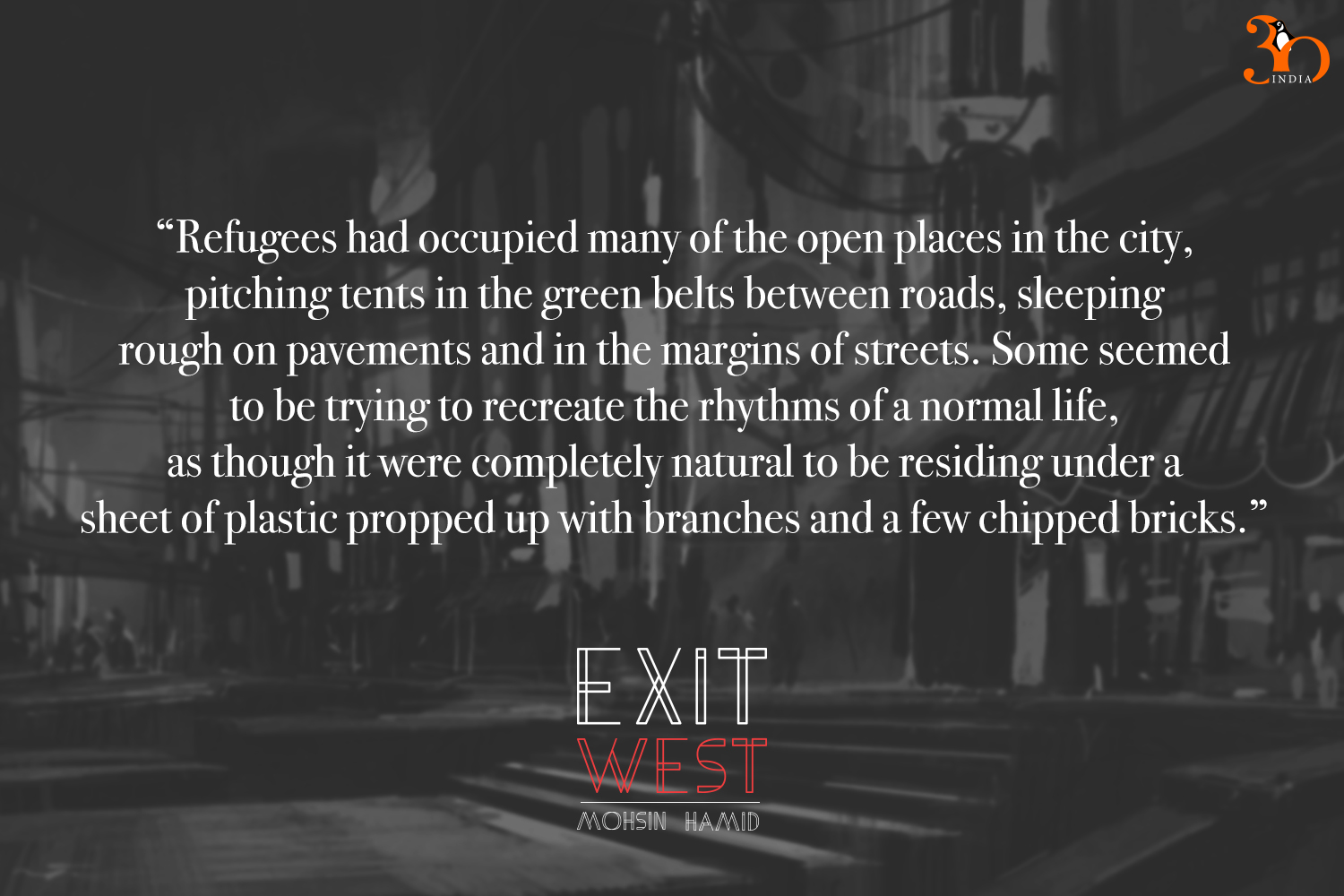


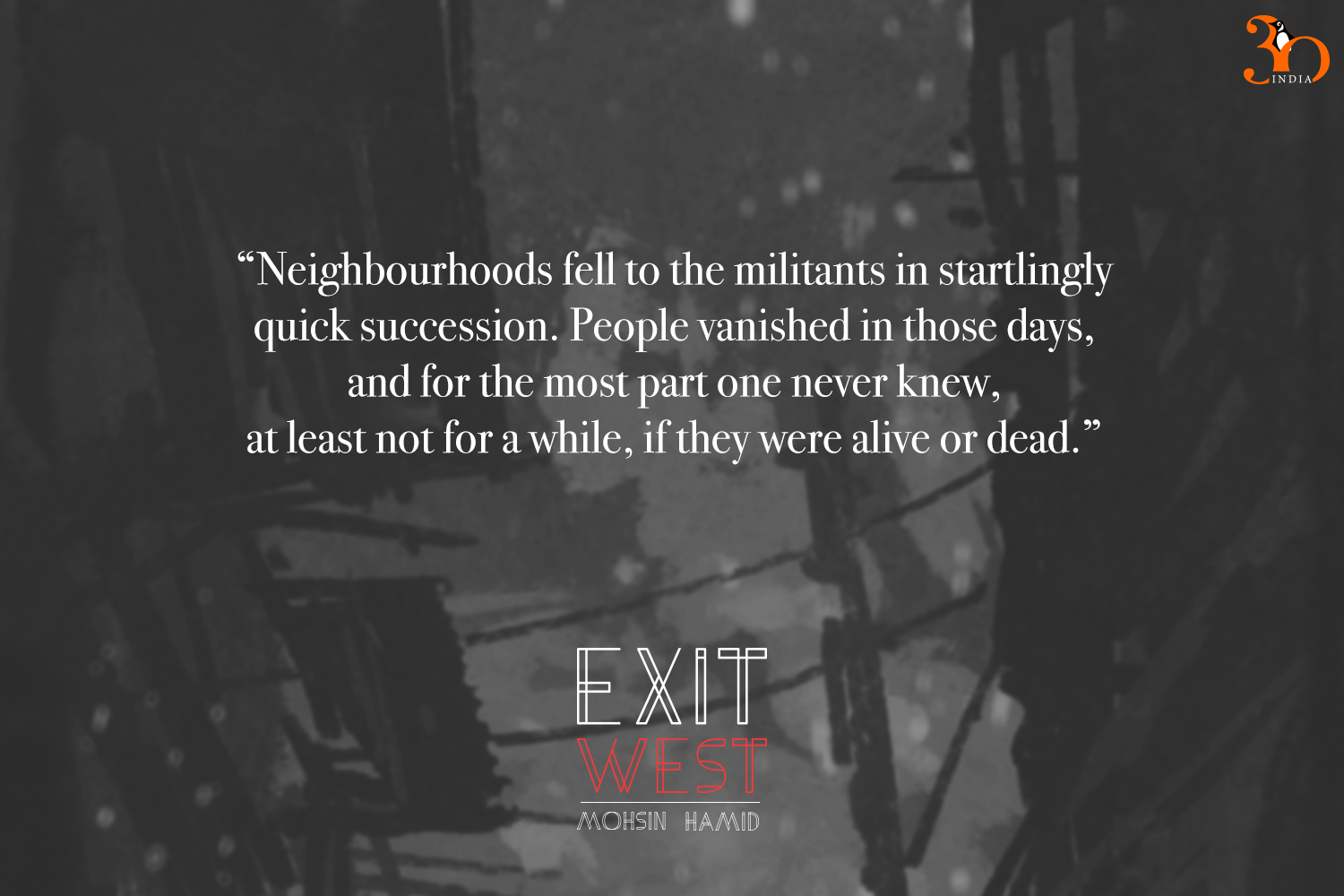



Do you, too, have a war-time experience to share? Share with us!
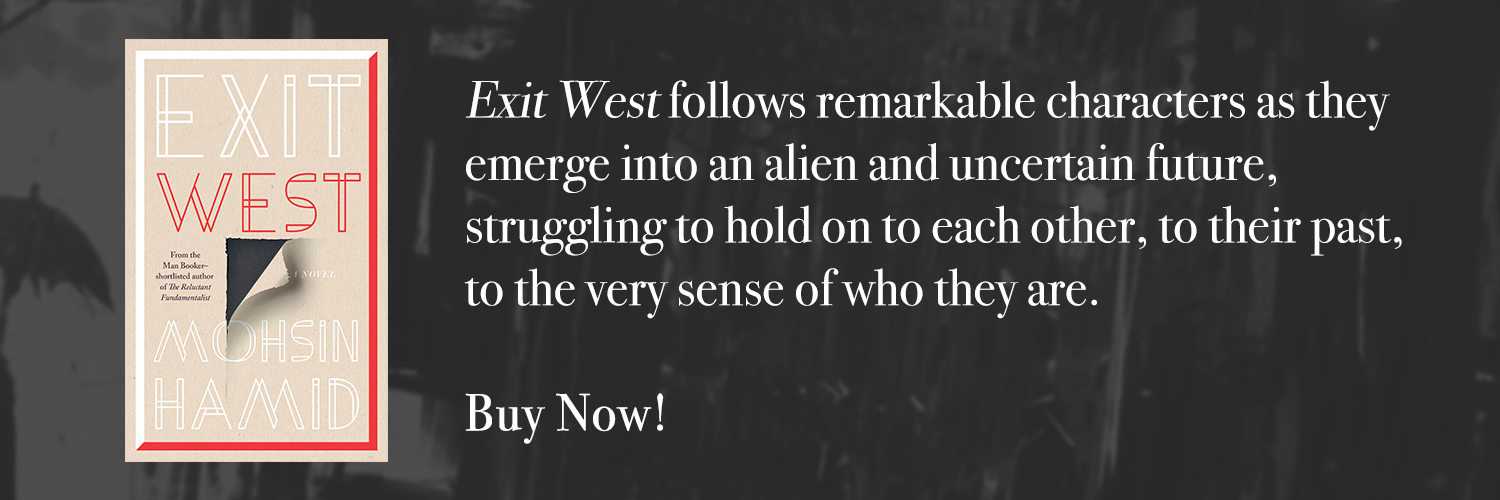
6 Wonderful Books You Should Gift the Women in Your Life
“Books make great gifts because they have whole worlds inside of them,” Neil Gaiman once remarked. This Women’s Day, do you want to gift her an inspirational world of stories? Worry no more as we have got you covered.
Here are six contemporary books that the women in your life will absolutely love to have!
This Wide Night
If you want to honour the women in your life who rose above unfavourable circumstances and came out on top, then this book is for you!
In this evocative and gripping novel, Sarvat Hasin depicts four beautiful sisters and their unconventional mother, living alone and together in a deeply patriarchal world. The Maliks, as they are called, live a life of relative freedom in 1970s Karachi. It is hard to break into their circle as they have forged the rules of their own universe. In a quietly seething world of This Wide Night, the unconventionality of these women collides with the dogmatism of the society around them.

Me and Ma
A moving memoir from one of the most talented artists of our time, Divya Dutta celebrates her mother’s struggles to turn her into the woman she is today. Capturing the beauty of a mother-child relationship, Divya Dutta walks us through the most intimate memories of her life. The incredible bond she forged with her mother helped her through tragedies and difficulties, and led her to become an award-winning actor of stature.
Me and Ma is one of the most beautiful tributes that you can give your mother!

The Spy
Is there a woman in your life who defied conventions? An epitome of fierce independence? If yes, then this enthralling tale of Mata Hari by Paulo Coehlo is one of the most perfect gifts for her!
Arriving penniless in Paris, Mata Hari swiftly became the most celebrated woman in the city at the back of her delightful dancing and showmanship. She led a liberated life and courted some of the most powerful men of her time. Not before paranoia consumed a country at war and the powers-that-be clanked down upon her, suspicious of her lifestyle that led them to believe she was a spy.

Devi, Diva or She-Devil
Do you know a woman who combines her personal and professional responsibilities with masterful ease? Then Sudha Menon’s take on smart career women would prove to be an enchanting tribute!
The book explores a myriad of complex issues faced by Indian women at the workplace, such as dealing with family pressures, gender perceptions, the glass ceiling, leadership challenges and bringing up children while also excelling in their careers.

Mr and Mrs Jinnah
Sheela Reddy’s fascinating account of a marriage that shook India, that of Mohammad Ali Jinnah and Ruttie Petit’s, brings to the fore an unlikely and unforgettable love story.
It was her intelligence and the fact that Ruttie was so widely read that attracted Jinnah. Apart from her beauty, Ruttie’s fierce commitment to the nationalist struggle struck a chord with him. She came across as a young independent woman who saw above the trivialities of the day.
This lucid account of an unlikely union that took the society of the day by storm is a must-give to the women in your life who share Ruttie’s exuberance and intelligence.
 The Girl Who Chose
The Girl Who Chose
Over the centuries, hundreds have retold the Ramayana, one of the two great epics from ancient India. They added new twists and turns but few have noticed that the tale always depends on the five choices made by Sita. In this charmingly illustrated retelling of the epic, Devdutt Pattanaik brings to the fore the often overlooked story of Sita.
As an epitome of freedom, Sita, the girl who chose, stands tall as a woman who decided not be bound by rules. Gift this book to one of the women in your life and let her know your admiration for her independence!

We hope that the list above solved your worries and provided you with wonderful options for that perfect gift – ones that the women in your life truly deserve!
Things To Leave Behind: Romancing the past
Set in the years 1840 – 1912, Namita Gokhale’s new novel ‘Things to Leave Behind’ brings alive the mixed legacy of the British Raj. The third in her Himalayan series, it evokes the breath-taking beauty of the Kumaon region. Set in a past we have not quite left behind, it chronicles the struggle for love and freedom of three generations of Kumaoni women and the emergence of a fragile modernity at a time of intense change.
Things to Leave Behind: The last novel in the Himalayan trilogy
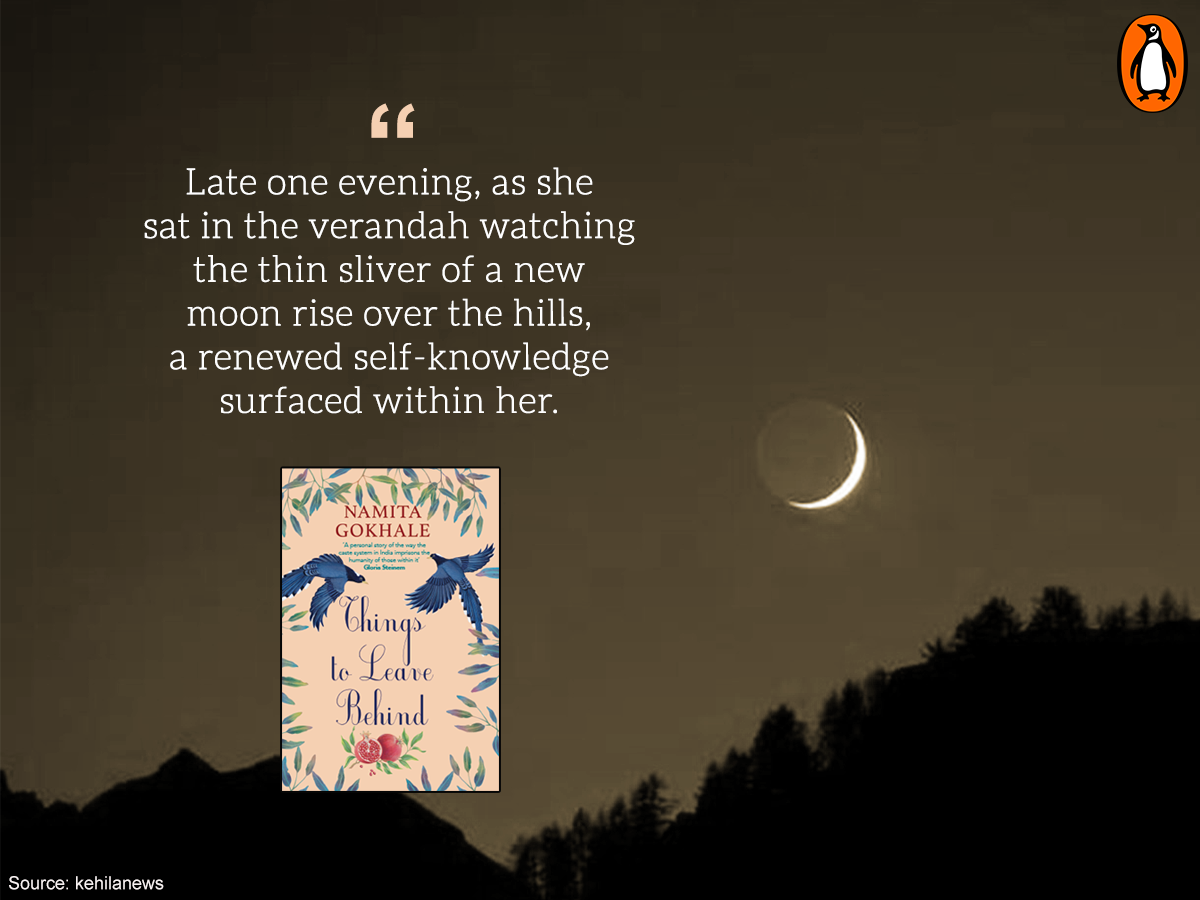
The book chronicles the mixed legacy of the British Indian past.
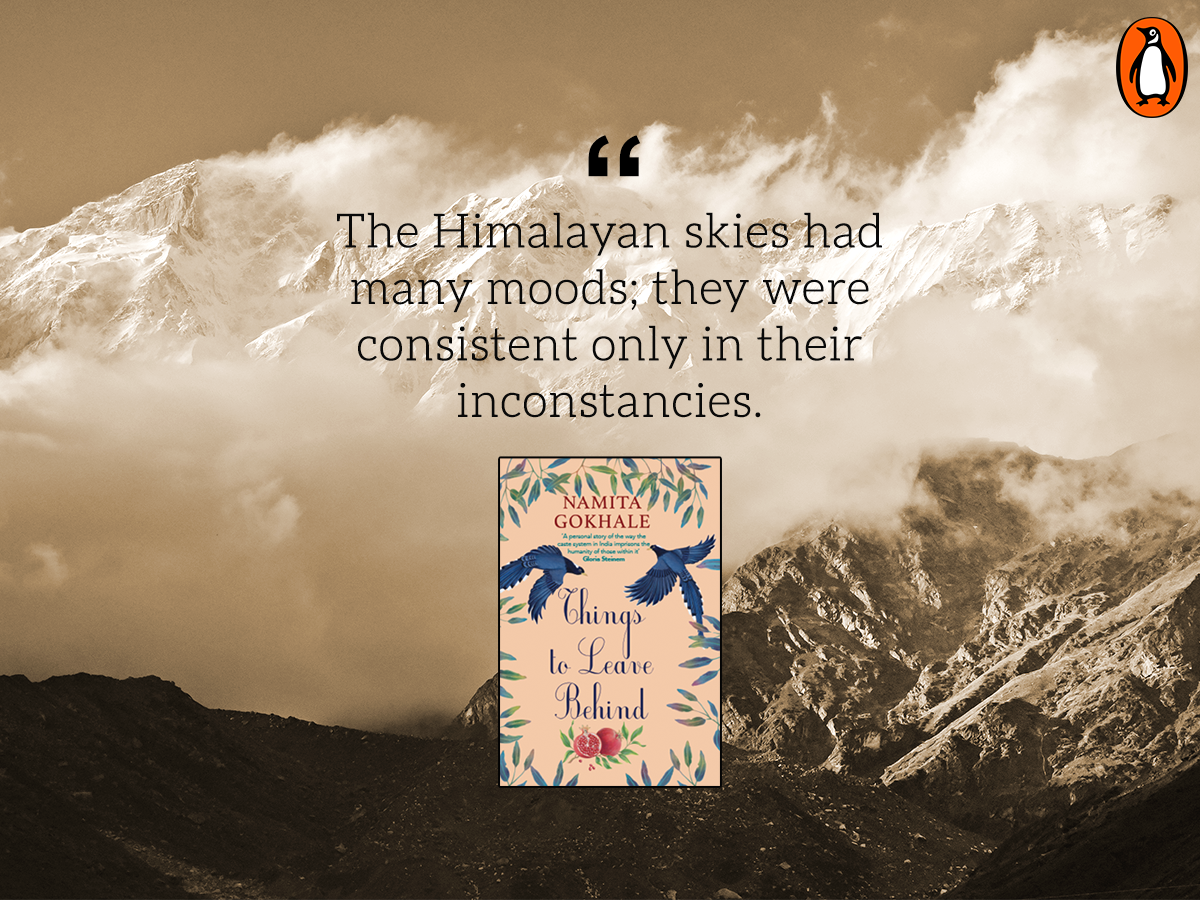
The strong and enigmatic woman characters who are at the heart of Things To Leave Behind
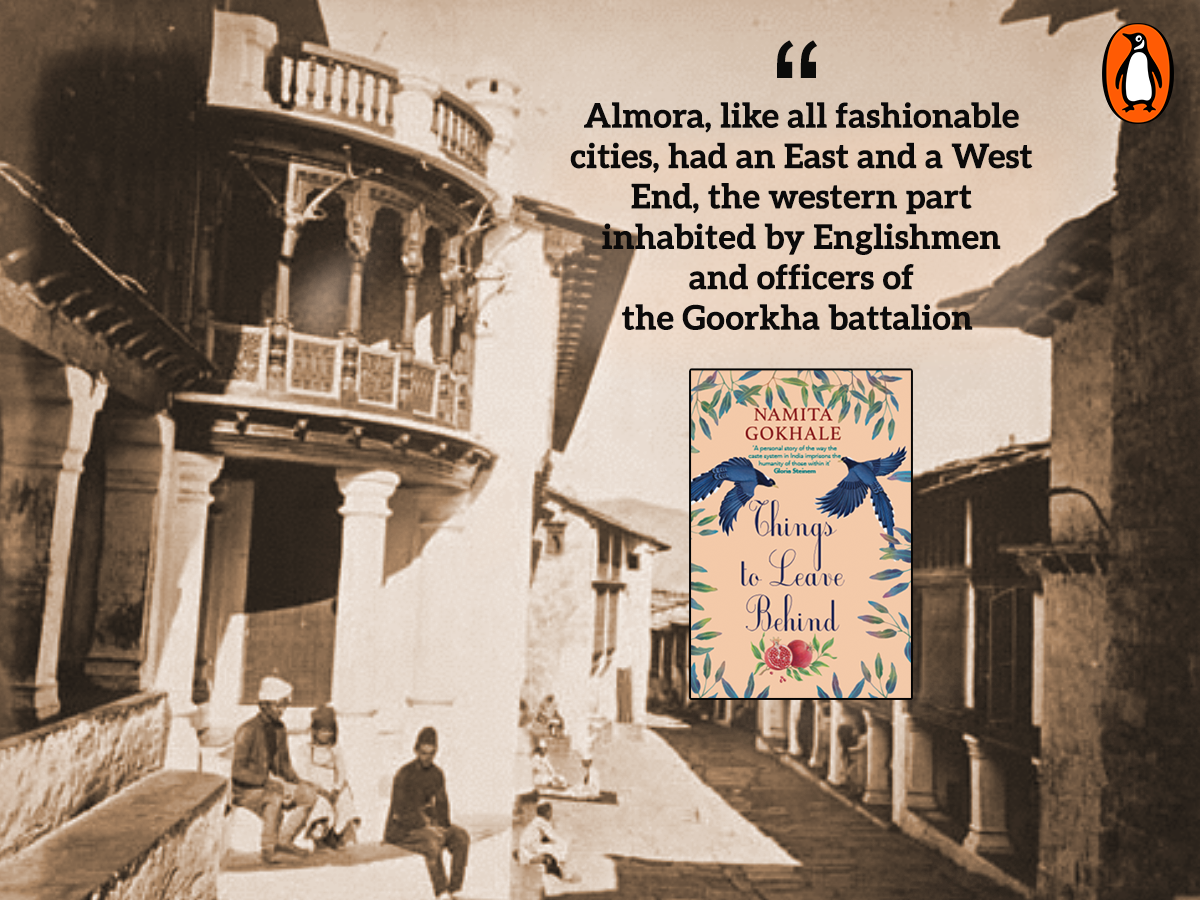
Things To Leave Behind evokes the landscape, the ferns and flowers, trees and clouds, of Kumaon.
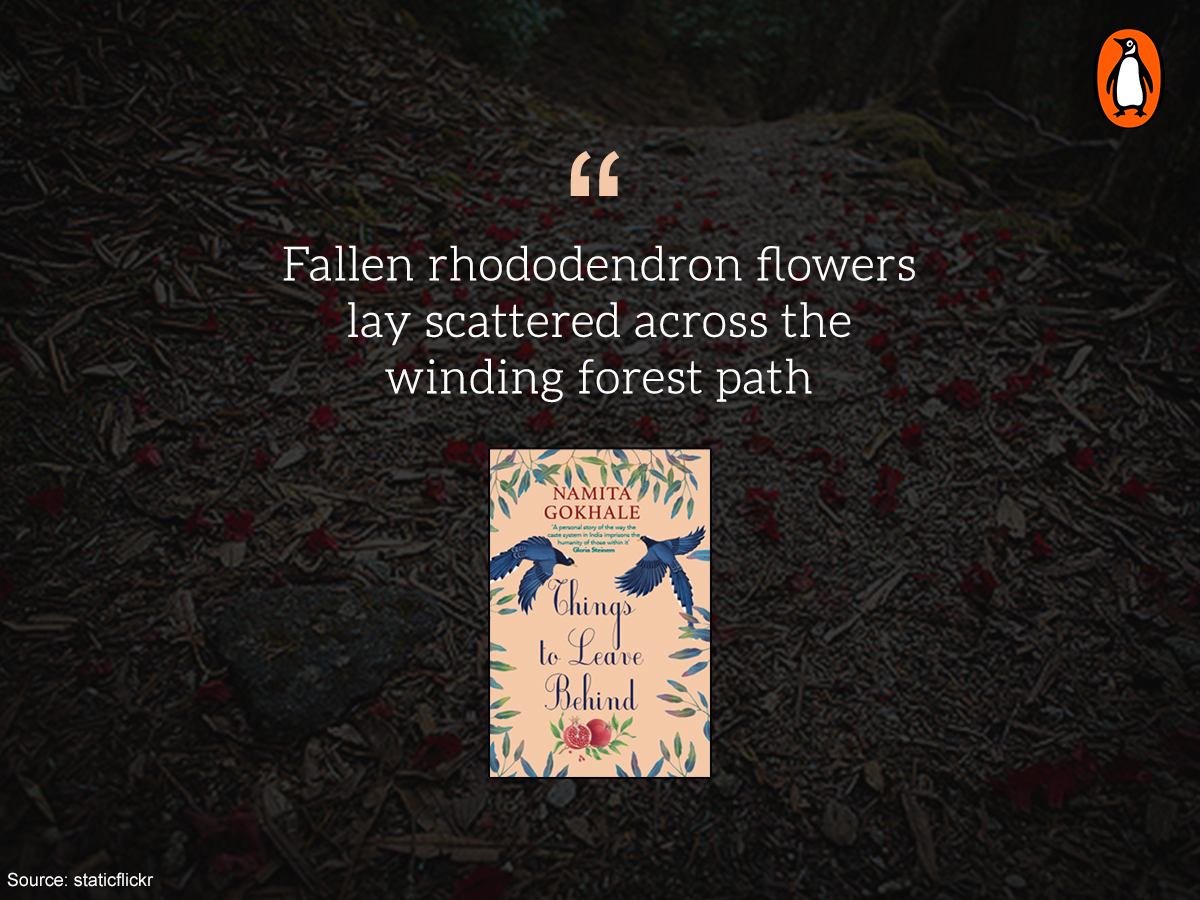
At the heart of the novel lies one singular painting: a portrait of love, longing and courage.
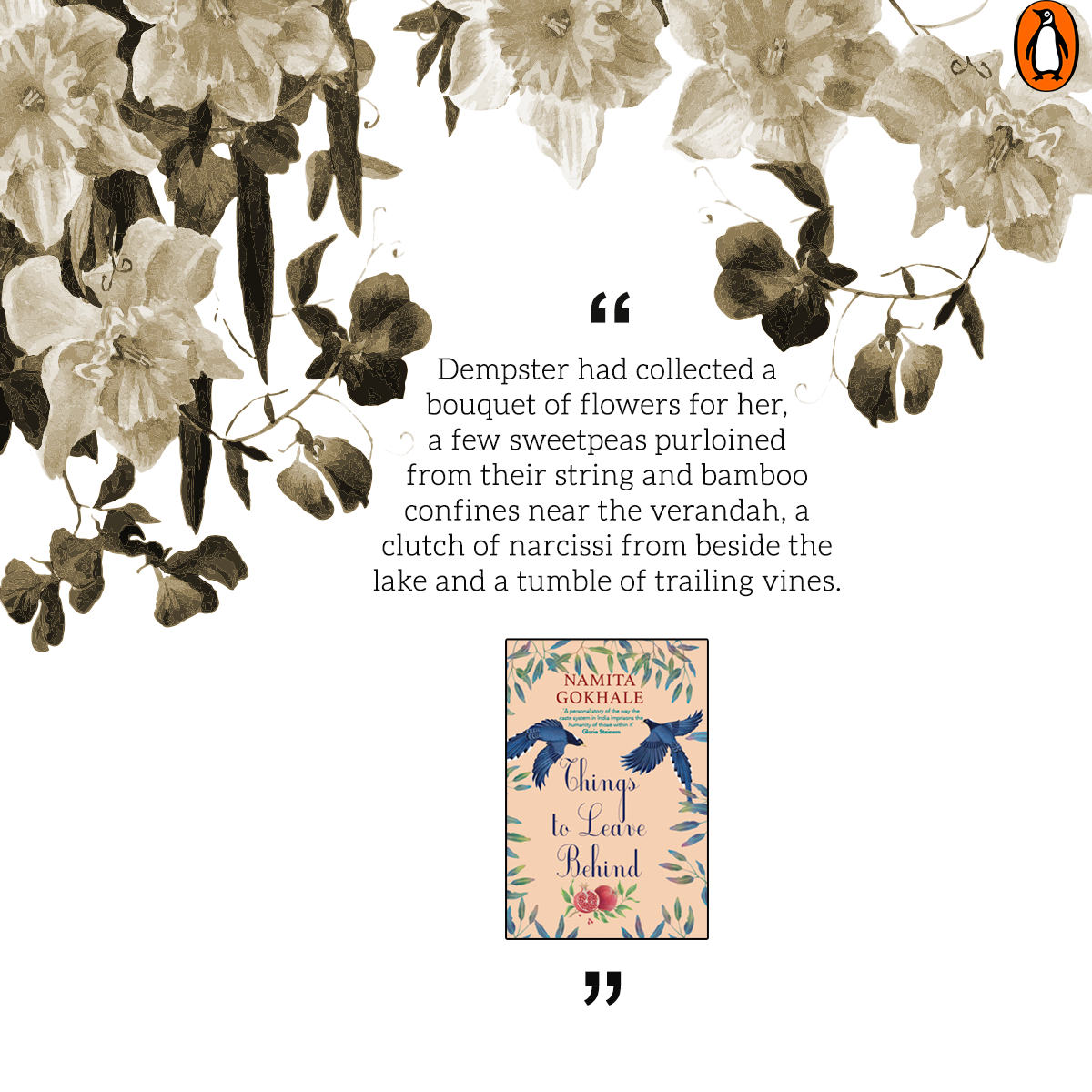
The story brings a not-so-distant past to life.

The history of rail transport in India began in 1853, forever changing the history of the subcontinent.

Forming a bridge between the past and the future

Witness nature like never before.
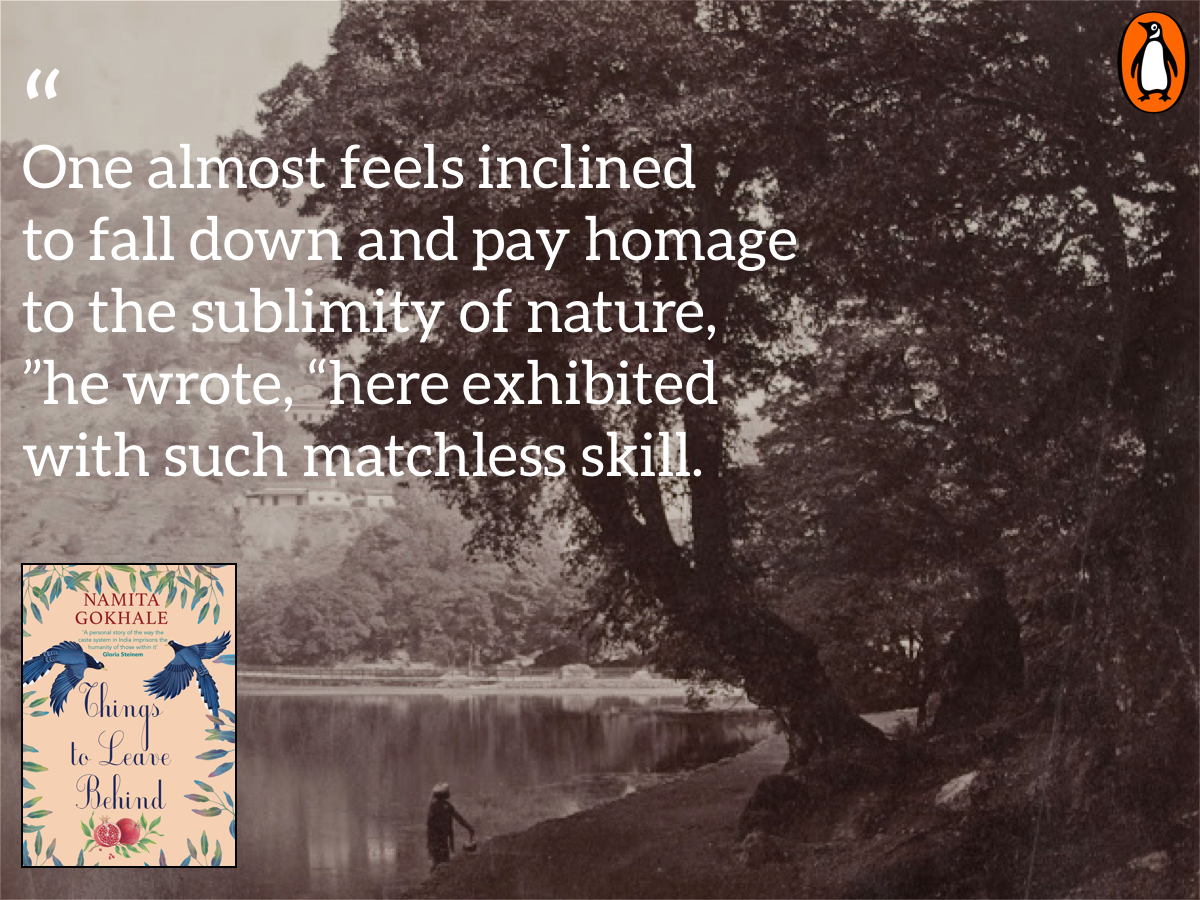
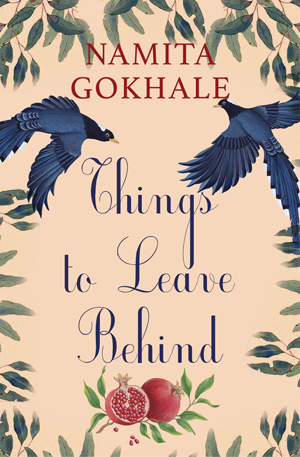
Get the book here.








